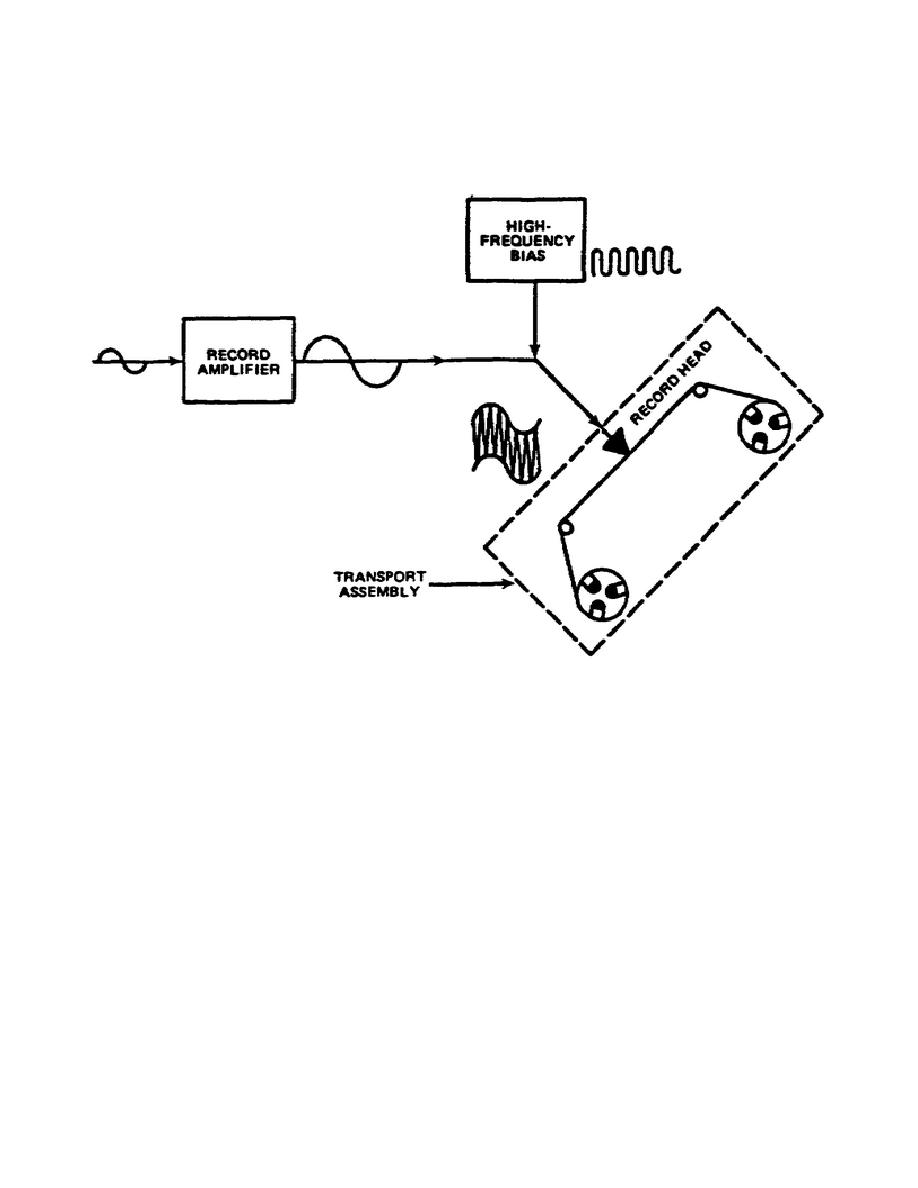
(2) As the signal current is fed to the head; the high-frequency bias current is supplied
simultaneously to the head (fig 3-6). The residual magnetization of the tape is accomplished by passing
the signal current, plus a high-frequency bias current, through the recording head winding. This
technique is referred to as direct recording.
Figure 3-6. Recording with high-frequency bias
(3) The high frequency of the bias oscillator serves to activate the head over the linear
portion of its magnetization curve. The linear operation puts the audio signal in a magnetization area for
the most faithful recording. If, however, the bias signal is increased until the head is saturated, the linear
operation is disturbed. The final magnetization produced in the tape is determined by the last flux
encountered close to the trailing edge of the gap as the tape leaves the gap area. For this reason, the
length of the recording gap is not as critical, within limits, for recording heads as it is for reproducing
heads. The recording heads usually have a gap in the range of 0.0005 to as much as 0.001.
e. Certain features of the playback (reproduce) head are required to provide full response to the
audio frequencies. One requirement is that the head gap be very narrow; that is, 0.0001 inch or smaller.
A large number
29



 Previous Page
Previous Page
